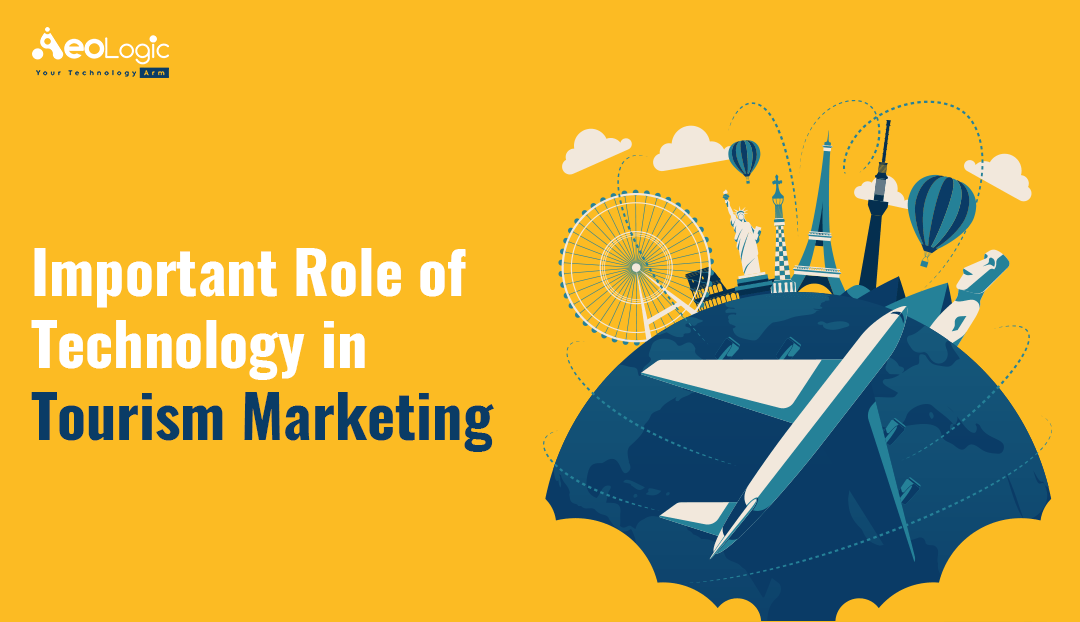The travel and tourism industry is a huge market, with a projected global worth of $8.8 trillion by 2022. Every year, people across the world take vacations and explore foreign lands for leisure or business purposes, and technology has become essential to this process. Technology can have a major impact on how tourists experience their vacations and how businesses in the industry market themselves. In this article, we’ll explore the importance of technology in the travel & tourism industry and how it can be used to boost marketing efforts.
The Role of Technology in Tourism Marketing
Technology has played a vital role in the tourism industry and its marketing. The internet has provided a platform for tourist destinations to market themselves globally. With the help of social media, potential tourists can learn about different destinations, their attractions, and amenities.
Some of the most popular travel websites are TripAdvisor, Expedia, and Booking.com. These websites provide ratings and reviews of hotels, restaurants, and tourist attractions. They also offer a platform for travelers to share their experiences with others.
Social media platforms such as Facebook, Instagram, and Twitter have also become popular among travelers. These platforms allow travelers to connect with each other and share information about their trips. Hashtags such as #travelgoals and #wanderlust have become popular among travelers who use them to find inspiration for their next trip.
Technology has also made it easier for travelers to book their trips online. Online booking platforms such as Airbnb and HomeAway have made it possible for travelers to find accommodations that fit their budget and preferences.
In conclusion, technology has played a significant role in the tourism industry and its marketing. The internet has provided a platform for tourist destinations to market themselves globally. Social media platforms have also become popular among travelers as they allow them to connect with each other and share information about their trips. Online booking platforms have made it easier for travelers to find accommodations that fit their budget and preferences.
Also Read: The Importance of Information Technology in Business Today
Technology Trends in Tourism Marketing
As the world progresses, technology continues to provide new opportunities for marketing in the tourism industry. Here are some of the latest trends that have been taking the industry by storm:
1. Augmented Reality (AR)
Augmented reality is one of the newest and most innovative technology trends in tourism marketing. It allows businesses to create an interactive experience for their customers by superimposing digital content onto the real world. This can be used in a variety of ways, such as providing information about tourist attractions or giving directions to businesses. AR is still in its early stages, but it has great potential to revolutionize tourism marketing.
2. Virtual Reality (VR)
Virtual reality is another emerging technology trend that is starting to gain traction in the tourism industry. VR allows businesses to create immersive experiences for their customers that can transport them to different locations or give them a taste of what it would be like to visit a certain attraction. This can be an extremely effective marketing tool, as it allows businesses to give potential customers a taste of what they can expect from their products or services.
3. Social Media Marketing
Social media marketing is nothing new, but it continues to be one of the most important tools for businesses in the tourism industry. Platforms like Facebook, Twitter, and Instagram provide businesses with a great way to connect with potential and current customers. Through social media, businesses can share information about their products or services, promote special deals or discounts, and engage with their customers.
4. Location-Based Services
Location-based services are becoming increasingly popular for businesses in the tourism industry. These services use GPS data to provide customers with relevant information about local attractions, hotels, restaurants, and more. This can be a powerful marketing tool, as it allows businesses to target potential customers who are near their locations or who have recently expressed interest in a certain destination.
Also Read: The Role of Human Resources in Business Continuity Planning
The Benefits of Using Technology in Tourism Marketing
Tourism is one of the world’s largest and most important industries, accounting for over 10% of global GDP. Technology plays a vital role in the marketing and promotion of tourism products and services.
The use of technology in tourism marketing has many benefits, including:
Increased reach: Technology can help you reach a larger audience with your marketing messages. For example, you can use social media to connect with potential customers from all over the world.
Improved engagement: Technology can also help you create more engaging content that will capture people’s attention and encourage them to take action. For example, you can use video or interactive content to tell your story in a more engaging way.
Greater efficiency: With the help of technology, you can automate some of your marketing tasks, such as email marketing or social media postings, to save time and resources.
In today’s digital age, it’s essential for businesses in the tourism industry to leverage technology in their marketing efforts to stay competitive and attract new customers.
The Challenges of Using Technology in Tourism Marketing
Technology has drastically changed the tourism landscape, making it easier than ever for people to research and book their travel plans. However, technology also presents some challenges for tourism marketers.
One challenge is keeping up with the latest trends. Technology evolves quickly, and what may be considered cutting-edge today could be out of date in a matter of months. This means that tourism marketers need to continually educate themselves on the latest trends and technologies to ensure they are using them effectively.
Another challenge is budgeting for technology. While technology can be a great way to save money (such as by automating repetitive tasks), it can also be expensive to implement and maintain. Marketers need to carefully consider whether the cost of implementing new technology will be outweighed by the benefits it provides.
Finally, one of the biggest challenges of using technology in tourism marketing is simply staying ahead of the competition. With so many businesses now using technology to market their products and services, it can be difficult to stand out from the crowd. Tourism marketers need to find creative ways to use technology to reach their target audiences and stay ahead of their competitors.
Also Read: Role of IoT in Fuelling EV Charging Future Growth
How to Use Technology in Tourism Marketing
Technology plays an important role in tourism marketing. It helps connect potential customers with businesses and allows businesses to share information about their products and services. Technology can also help businesses track customer behavior and preferences, and create targeted marketing campaigns.
Some of the most effective ways to use technology in tourism marketing include:
Creating a responsive website: A responsive website is one that automatically adjusts to fit the device it is being viewed on, whether that’s a smartphone, tablet, or desktop computer. This is important because potential customers are increasingly likely to search for information about businesses on their mobile devices.
Developing targeted online ads: Online advertising platforms like Google AdWords and Facebook Ads allow businesses to target potential customers with ads based on their location, interests, and even the specific keywords they have used in a search engine. This ensures that your ads are seen by people who are most likely to be interested in what you have to offer.
Tracking customer behavior: Google Analytics and other similar tools allow businesses to track how visitors interact with their website. This information can be used to improve the user experience on your site, as well as to assess which marketing campaigns are most effective at driving traffic and conversions.
Utilizing social media: Social media platforms like Twitter, Facebook, and Instagram provide an easy way for businesses to connect with potential customers and build relationships. By sharing relevant content and engaging with users, you can increase brand awareness and drive traffic back to your website.
Using virtual reality and video tours: Virtual tours allow potential customers to explore your business or destination before they even arrive. Video tours are also an effective way to promote tourism, as they provide a more immersive experience than photos alone.
By incorporating technology into your tourism marketing efforts, you can reach more potential customers and increase awareness of your business or destination.
Conclusion
Technology has become an integral part of the tourism industry, as it provides a wide range of marketing and promotional tools for companies to reach tourists in new, innovative ways. Technology helps tour operators to provide virtual tours and interactive experiences for customers who are unable to physically visit locations due to restrictions imposed by the pandemic. Additionally, technology also allows operators to track customer preferences and tailor offers accordingly. The importance role that technology plays in travel and tourism is undeniable, so it’s important for all companies within this sector to use these technological advances strategically in order to maximize their potential profits.
If you have any concerns about technology, you can contact Aeologic Technologies!
Related Blogs:
- How AI/ML Can Change the Public Transportation Industry
- Transforming Business With Digital Technology in the Oil Palm Industry in India
- Importance of Digital Asset Management in the Retail Industry
- How AI is Transforming the Agriculture Industry
- 10 Ways to Use Artificial Intelligence to Improve Business Processes
- The Future of IoT Technology in Convenience Stores
- Building Manufacturing Resilience Through AI and ML






